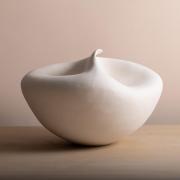Dog trainer Sophia Taylor provides a few tips on how to decide whether or not to use the crate training method to help your new canine addition settle in more easily
Crate training can be a minefield. If approached in the correct way, it can be successful, if not, it is sure to be a nightmare. It is fair to say that crates are not suitable for all dogs. Puppies are different, and some homes do not have the space to accommodate one. They are definitely not suitable for dogs to be left in for hours on end.
I can recall hearing straight from the horse’s mouth of dog owners boasting that they had left their puppies/dogs in the crate for 19-20 hours out of 24 and they wondered why their dog was a whirling dervish. Totally cruel, in my opinion, and if this is what people think crates can be used for, then they should think again about getting a dog.
The suggestions I make are gained from my own personal experience with puppies I have had over the years and the experiences of friends and clients I know and respect.
Buy a crate that enables your puppy to grow into and has enough room for it to stand up and turn around. Allow your puppy to get used to the crate by leaving the door open and put toys, treats and a comfy bed inside. You can try feeding the puppy in it but leave the door open. Next gradually, close the crate door for a few seconds and then open immediately. Try not to interact too much with the puppy. Do this over a week or so. For some, it may only take a few days. In between this, I suggest owners sleep downstairs with their puppy, or take the puppy in their bedroom and gradually move the crate further away from the bedroom to its final place.
Some puppies will take to the crate immediately but many will not and this is where your gut instinct plays a huge part.Our recent addition was seven weeks old when he came to live with us. My immediate gut instinct was not to crate him. However, I went against this and the first and second nights were pitiful and quite upsetting. So on the third evening, I did follow my instinct and left the crate open and stayed downstairs. This was the best option for this little chap as he let me know when he needed to go out and this of course has helped with house training. I have found that as each day passes and the puppy has got used to his surroundings, bonded with us and the other pack members, he has been more than happy to be left at other times. We have chosen not to use a crate with this particular puppy. He has settled in downstairs with the rest of the pack and now sleeps from 11pm to 7pm and he only lets us know if he needs to go out and relieve himself. It is difficult to set in stone what to do. But trust your gut feeling. Yes it is true that for some puppies it may cause problems if this is not dealt with correctly. Separation anxiety is what springs to mind. But not all puppies will end up with this if the crate training is dealt with in the right way, but if you have another dog already the puppy will settle much quicker.
I don’t believe in putting a puppy in the crate at 10pm and leaving it in there until 7am. This is far too long. If the puppy settles and then cries, you need to get up from your slumber and put the puppy out to relieve itself and then put it back in the crate. You then need to go back to bed. But some nine week old puppies can and have gone this length of time before crying to go out. If you are determined to use a crate, try the suggestions above by introducing the puppy slowly to its den and all should be well. ‘Horses for courses’ is one of my favourite sayings, so be flexible in your approach and you will be successful. w
‘On the Scent’ is not responsible for issues arising from these suggestions. If you are struggling with your puppy, please get in touch with your local dog trainer, behaviourist or vet who should be happy to help.
onthescentdogtraining@hotmail.co.uk
Check our pet page for more on pets!
Follow Suffolk Life on Facebook for more updates.



























